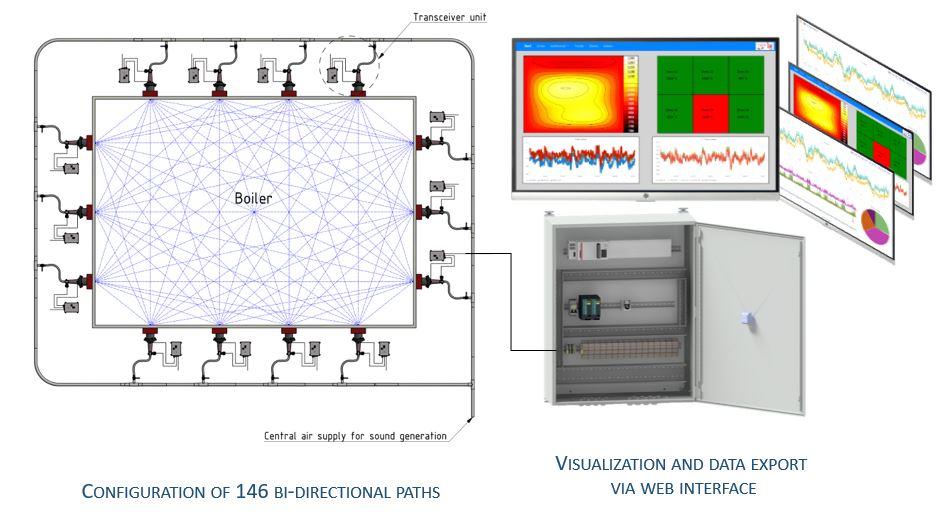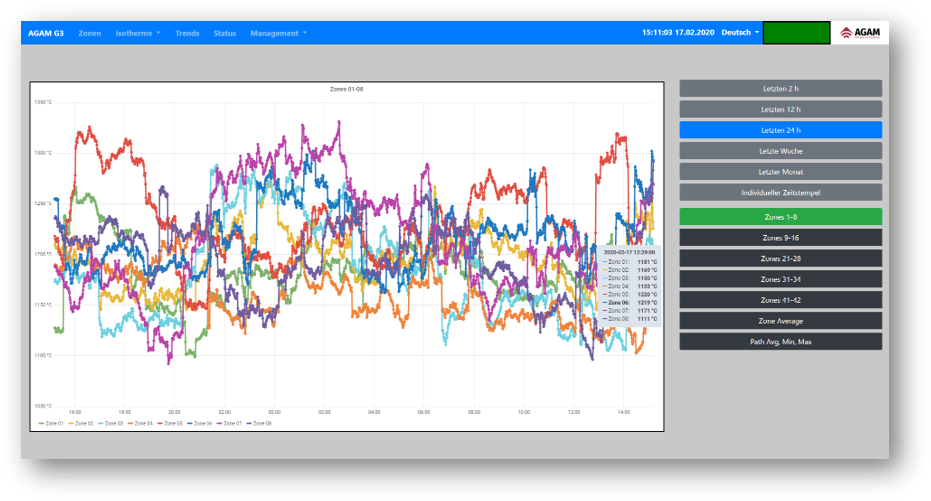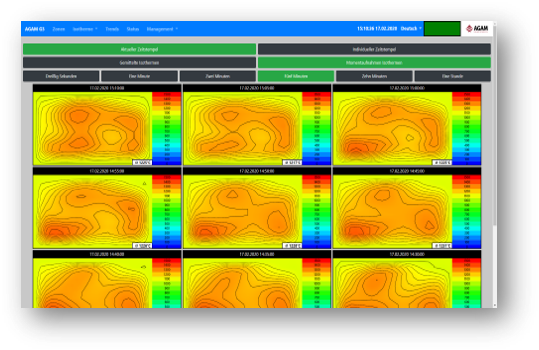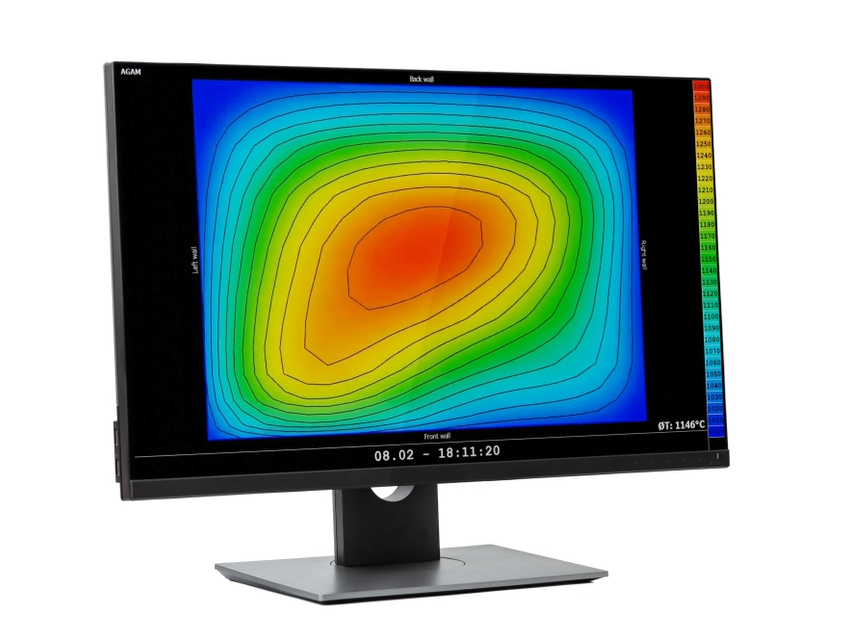AGAM is an important element for efficient and environment-friendly operation in more than 300 plants worldwide. AGAM proves its efficiency in monitoring, control, and optimization in power and recovery boilers. AGAM operating principle is very simple: the speed of sound in a gas is dependent on the gas temperature. The acoustic pyrometer measures the flight time between the two transceivers and as the distance is known the speed of sound can be calculated. This is then transformed into a radiation-free path temperature measurement. A multi-path measurement forms a dense mesh which in turn allows a very accurate temperature profile creation.
Product features:
- Real gas temperature – without radiation errors
- 2D temperature distribution with highest resolution
- Precise from 20 to 2000 °C – even under the most adverse conditions
- Contactless, self-cleaning and drift-free
- Fast 2D measurement near real time
- Platform-independent in the browser
- Software with modern and modular architecture
- Robust integrated hardware
- Decentralized digitization possible
- Certificate

AGAM G3: System overview

AGAM G3: Completely Web-based Interface

- All functionalities in compact, modular, networked and standardized assemblies
- All common interfaces (OPC, Profibus, Profinet, Modbus, 4..20 mA……)
- High quality components of a German automation supplier
- All software on memory card. Hard disk (3D-SSD) needed for data archiving only
- Easy maintenance
- Easy system recovery – no expertise required
- Optional: Fully digital field bus after microphone
- Access via web interface

Benefits with AGAM G3
- Temperature imbalances and local strands are the cause of increased emissions, corrosion, caking, erosion and loss of efficiency.
- Increased availability of boiler systems > € 100,000 per avoided lost day.
- Imbalances and strands correlate with local O2 differences in the same place.
- Minus > 0.5 % O2 corresponds to > 0.2 % higher efficiency.
- Reduction of coal consumption of > 1000 t per year (hard coal).
- Reduction of imbalances allows operation with low air ratio and reduced CO and NOx peaks.
- A 20-40% reduction in additive consumption with a NOx reduction of 200 mg/m³ equals an economic potential of 50,000 € – € 100,000 € per year.
The balancing of temperatures by regulation or trimming leads to higher availability (less erosion, corrosion, clogging), lower emissions (CO, NOx) and higher efficiency (exhaust gas loss, unburned, improvements on the steam side).


